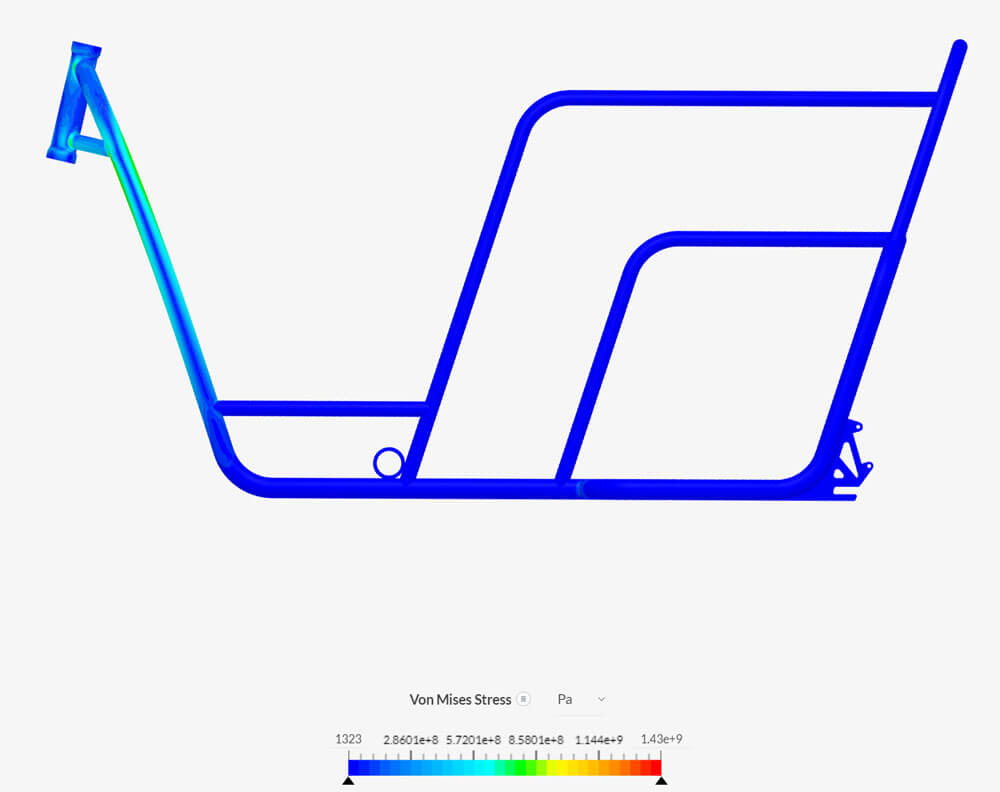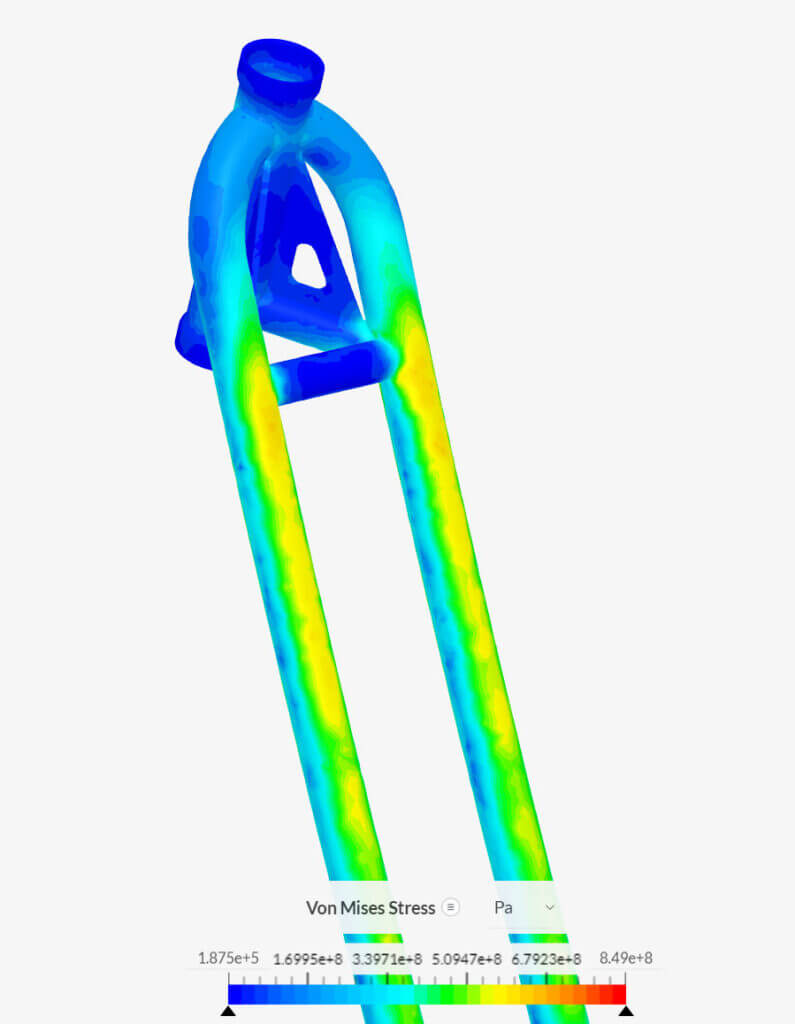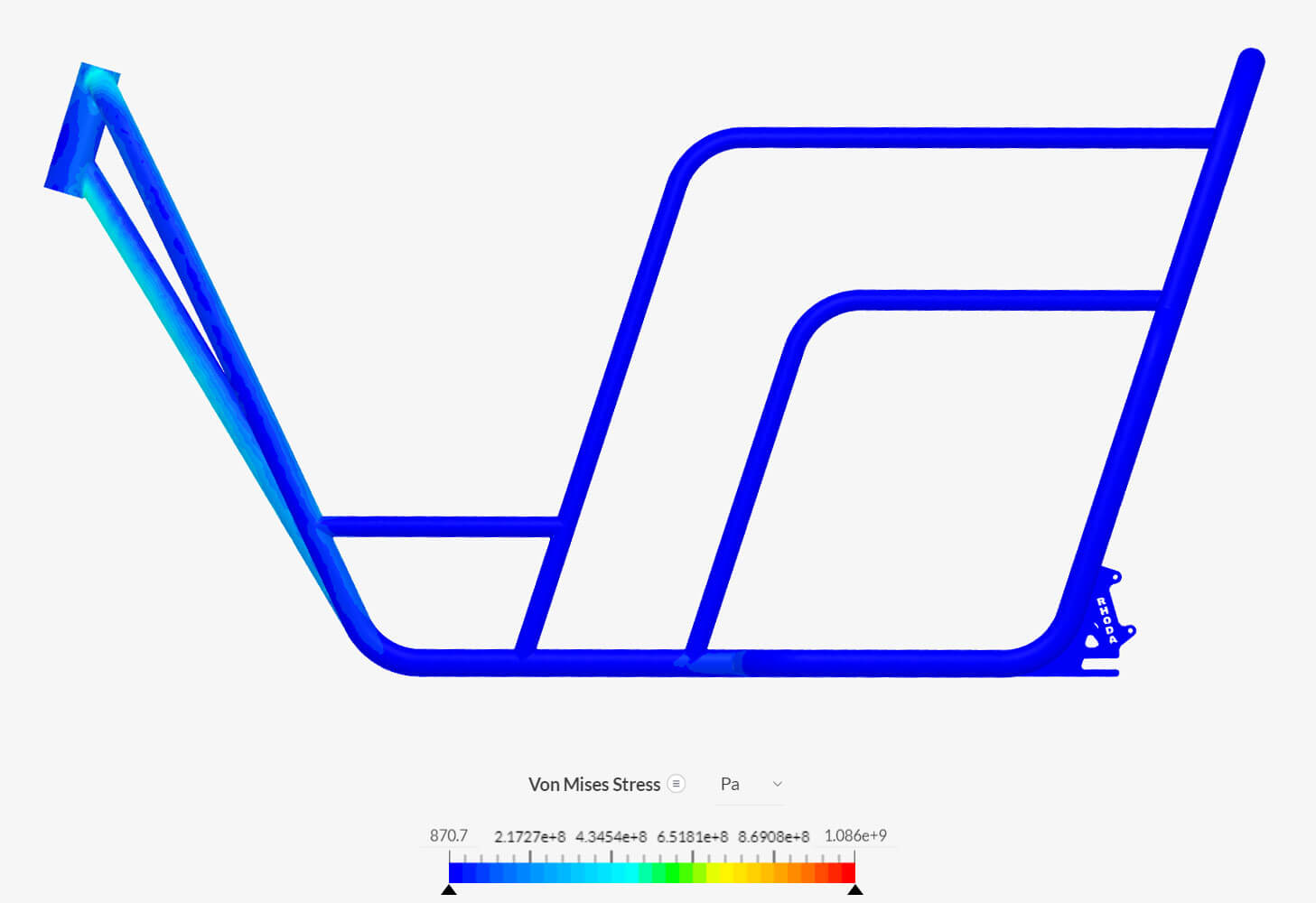After riding several thousand kilometres on our Mk1 prototype frame we have been able to identify a number of areas that needed improvement in order to strengthen and stiffen the frame. However, we also wanted to maintain the iconic and recognisable side profile of the RHODA AT so we turned to using Finite Element Analysis (FEA) to iterate through tens of frame options before arriving at the Mk2 pre-production design. Through online collaboration between Lee (ensuring keeping signature design) and Eyas with testing multiple engineering iterations we came up with the final design.
Step 1: creating a baseline
The first step on any journey is knowing were you are at the beginning and also understanding where you want to go. We turned to ISO safety standards and put them into the FEA software for the Mk1 frame design, and what we found correlated with the areas of the frame where we had identified weak points on the prototype. The ISO 4210 standard creates a baseline for ensuring that the frame will withstand a collision to the front wheel, and as we suspected our frame would fail based on the current design.

Our first design iteration was to add gussets at the weak points to see if that would add enough strength to the localised weak points. However, it rapidly became obvious that we would need a better strategy to really create a strong and light frame that would live up to our standards.

As any good engineer knows, beam theory is all about moments of force and radii of inertia, i.e how far away the material is from the center of the bending force. Or to put it really simply, a large diameter tube exponentially stronger than a small diameter! So we took a look at larger diameter tubes, however we really didn’t like the way this altered the silhouette of the frame and the additional strength was compromised by the increase in weight.
What we knew we were missing was triangles. After all, the ‘triple triangle’ or ‘double diamond’ classic bike frame has been basically unaltered for over a hundred years, and that’s because it works so well! However, we were adamant to maintain the step-through frame design to ensure the AT is accessible to as many people as possible.
After a few false starts and over-complicated designs we realised that by tweaking the angle of the down tubes at the front we could create enough space to fit in a long middle down tube, which immediately stiffened up the entire front end. By experimenting with the tube thickness and angle we were able to get to the fantastic RHODA AT Mk2 frame, and move forward with the production.



